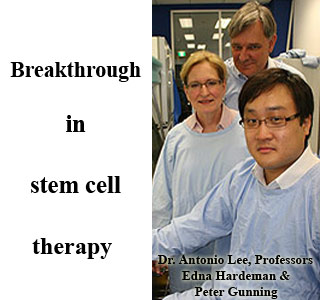
This is said to be the world’s first procedure to have been successfully used to re-grow muscles in mice. This procedure could also be useful for treating human tissue illnesses, like in the areas of the brain, pancreas, liver, etc.
This research was jointly conducted by Professor Peter Gunning, Professor Edna Hardeman and Dr. Antonio Lee from the School of Medical Sciences, The University of New South Wales. This team of researchers made use of the methodology that is presently being trailed in bone marrow transplantation. It is said that the adult stem cells are given a gene that makes them immune to chemotherapy. Chemotherapy is used to replace the damaged cells by new cells.
Professor Gunning says that, “The beauty of this technique is that chemotherapy makes space for stem cells coming into muscle and also gives the stem cells an advantage over the locals. It’s the first strategy that gives the good guys the edge in the battle to cure sick tissues,†He continues that, “What has been the realm of science fiction is looking more and more like the medicine of the future.â€
The researchers state that the capability of the stem cells to regenerate entire tissues could pave the way for future development of various techniques in treating human diseases. This new methodology has removed one major obstacle in the path of successful stem cell therapy: the process of increasing the cells longevity for quite some time after being introduced into the damaged tissues.
Researchers hope to soon conduct human trials in the future, for the treatment of certain diseases like muscular dystrophy. This research was funded by the Oncology Children’s Foundation.
Their findings are present in the journal Stem Cells.
